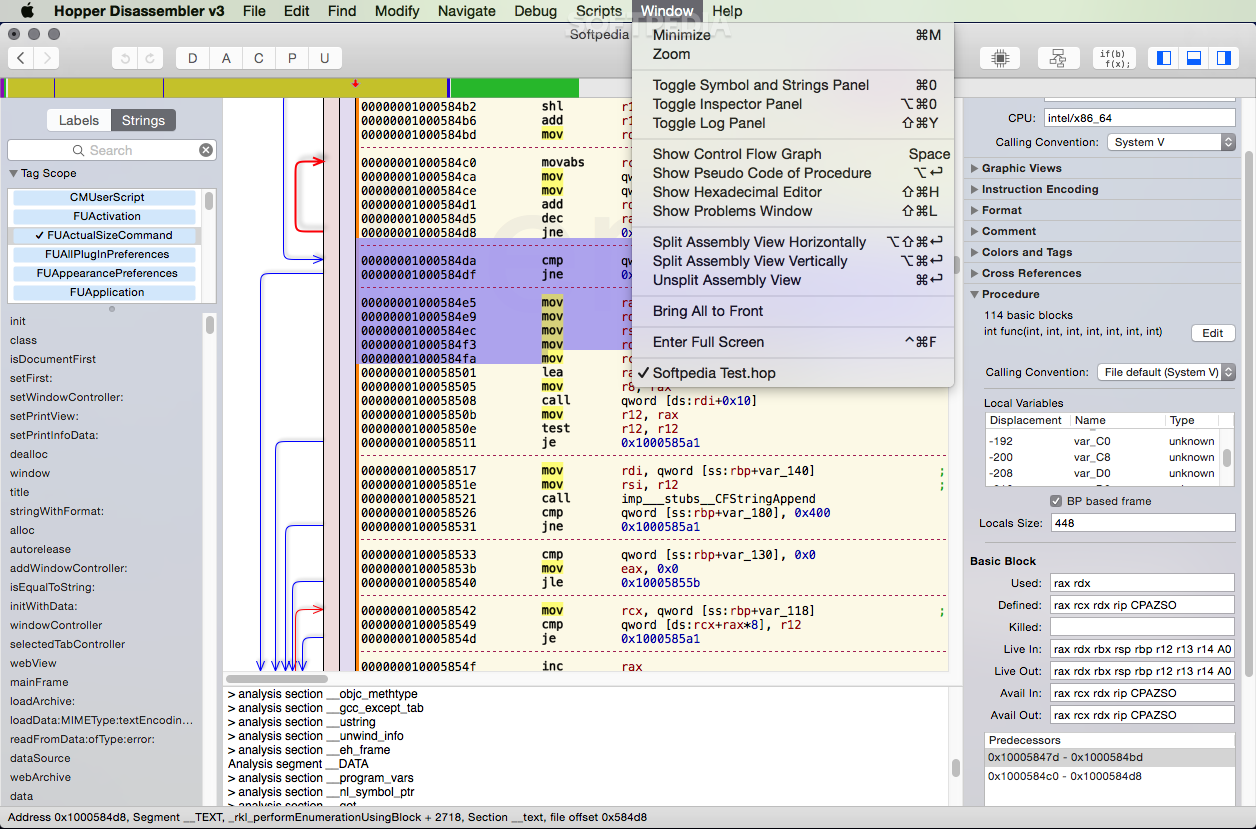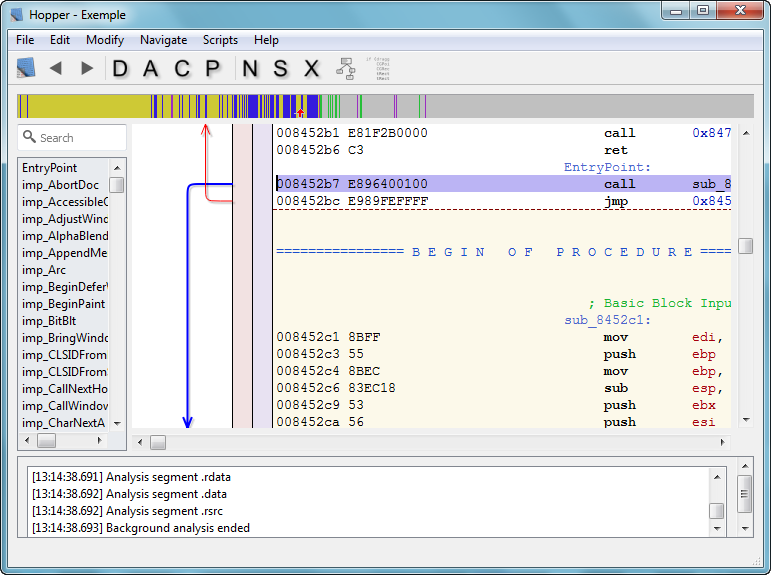

- #DUMP MEMORY RANGE WITH HOPPER DISASSEMBLER MAC SOFTWARE#
- #DUMP MEMORY RANGE WITH HOPPER DISASSEMBLER MAC CODE#
- #DUMP MEMORY RANGE WITH HOPPER DISASSEMBLER MAC WINDOWS#
GDB, the GNU Project debugger, allows you to see what is going on inside another program while it executes - or what another program was doing at the moment it crashed.Ī combined disassembler/static analysis/symbolic execution/debugger framework.
#DUMP MEMORY RANGE WITH HOPPER DISASSEMBLER MAC CODE#
OllyDbg (named after its author, Oleh Yuschuk) is an x86 debugger that emphasizes binary code analysis, which is useful when source code is not available.Īn open-source 圆4/x32 debugger for windows. Emphasis on binary code analysis makes it particularly useful in cases where source is unavailable. OllyDbg is a 32-bit assembler level analysing debugger for Microsoft® Windows®.
#DUMP MEMORY RANGE WITH HOPPER DISASSEMBLER MAC WINDOWS#
The WDK is used to develop, test, and deploy Windows drivers. In the following tables, you can find the tools you need according to the heading.
#DUMP MEMORY RANGE WITH HOPPER DISASSEMBLER MAC SOFTWARE#
instruction breakpoints and the setInstructionBreakpoints request.A set of tools for software reverse engineering.the granularity property on the stepping requests,.the instructionPointerReference property on stack frames,.the disassembly request for providing the disassembled source for a memory location,.The Disassembly view is only available in an active debug session and when the underlying debug extension supports it.Īs of today only the "C++" and "Mock Debug" extensions can feed the Disassembly view.įrom a technical perspective VS Code's implementation of the Disassembly view now supports four more features of the Debug Adapter Protocol:

The Disassembly view can be opened from an editor's context menu to show the disassembled source of the active stack frame, and it supports stepping through assembly instructions and setting breakpoints on individual instructions.

Thanks to a large code contribution by the C++ team, we are happy to include a preview of a Disassembly View in this milestone. It is coming, with a preview feature in VSCode 1.59 (Jul. However it dosen't work with function pointers (try and you will get an error). This program works will almost every pointer type, for example int, char, double. (The first byte in the next row is the following byte to the last byte in the first row). In the beginning of every row, a pointer to the first byte is showed. There are 2 rows because the third parameter is set to 2. Now when the second parameter is 4, every row contains 4 bytes. Because an int is 4 byts (0A 00 00 00) and it is in reversed order, you can see that (00 00 00 0A) has the value 10, which is the value of a. This is taken from the stack and is therefore in the reversed order. The memory is written in hexadecimal which means that every pair is a byte. The last parameter is how many lins (with so many byts set by the second parameter) should get printed (set to 1 from start). The next is how many bytes are shown in one row (set to 10 from start). The first parameter is a pointer (non function pointer). Call the MemView function, MemView(POINTER pointer, int length = 10, int lines = 1). Std::cout << IntToHexa((int)*ptr) << " " Unsigned char* ptr= (unsigned char*)pointer Void MemView(POINTER pointer, int length = 10, int lines = 1) I am fairly new to c++ so this code might not be any good, but it works and that is the important part. However, we are coders and we can make our own features ). At the time (Jun 2020), it seems that this feature still dosen't exist in VS code, link (and maybe the answer you are looking for).


 0 kommentar(er)
0 kommentar(er)
